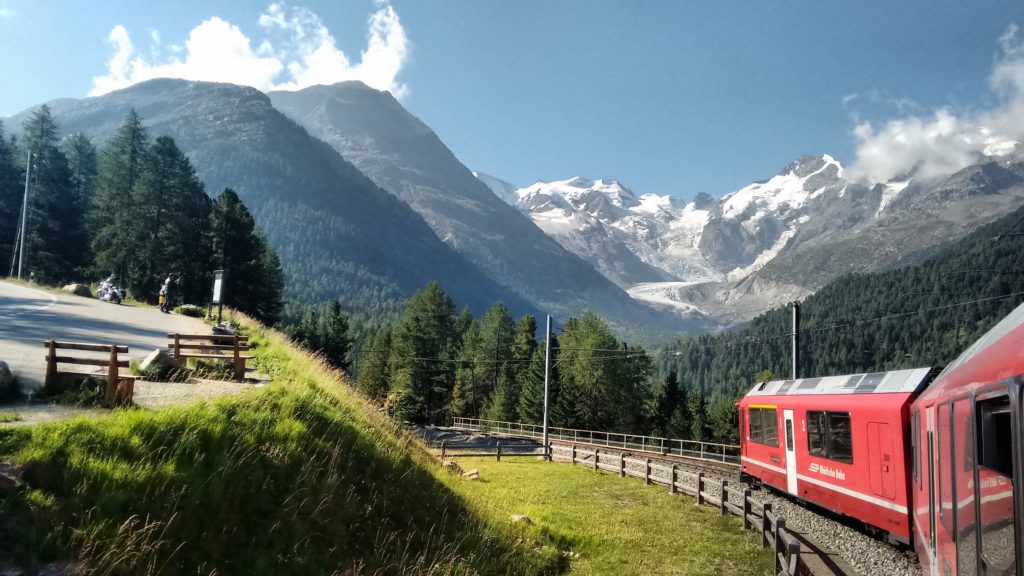The Bernina Railway is an international line connecting St. Moritz, in the Swiss canton of Grisons, with the Lombard town of Tirano, Italy. Completely opened in 1910, it’s one of the most famous railways in the world due to the spectacular landscapes along its route and for its advanced level of engineering, especially in the time when it was built. Together with the Albula Railway, it’s part of the UNESCO World Heritage Site “Rhaetian Railway in the Albula/Bernina Landscapes” since 2008.
The most distinguishing feature of the Bernina Railway is that it follows the landscape adapting to it, rather than modifying it with great and complex works. This has several reasons, technical and historical. The first one is that the designers had to renounce to a rack railway because the line should be suited to passenger and freight service, and the rack system can’t stand too heavy trains. The second one is that the Bernina railway should serve valleys (Engadin and Valtelline through the Valposchiavo) that keep strong cultural and commercial relations since a long time, but had become of secondary importance in the late XIX century after the opening of railways through other Alpine passes like the Gotthard or Brenner. So speed and efficiency weren’t a primary need and the line was designed also for tourism purpose.
The line is almost a “local product”, with bridges, tunnels and other works made with local materials, and the trains are powered by electricity produced exploiting the vast water resources of the area. The construction of the Bernina Railway saved the territory from a perpetual depression, stopping emigration and fostering the local development through tourism and trade (and with the building and maintenance of the railway and electric infrastructure, of course).
The gallery follows the line from Tirano to St. Moritz on board and, for the first section until Brusio, from the path Via Albula/Bernina, created exactly to explore the railway… by feet. Every picture has a caption with facts and figures about the depicted situation and the railway.


Several rolling stock of the RhB is visible at the station.









The station of Campocologno and its own café, typically decorated.





Yeah, riding it with the train it’s like model railroading on natural scale!











We now start to climb meters quite rapidly. The section between Poschiavo and the Lago Bianco is the most complicated and was the last to be completed. It’s a dizzying zigzag! The station of Cavaglia lies at 1.692 mt. After it two 180° curves together with several bridges and tunnels bring us over 2.000 mt.





















